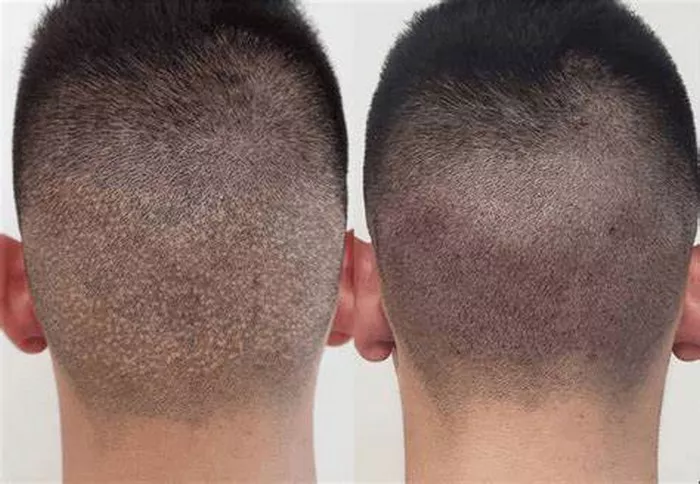Hair loss affects millions of people around the world, regardless of age or gender. While hair transplant options continue to evolve, many individuals seek alternatives that do not involve surgery. Non-invasive hair restoration methods have gained significant popularity as they offer effective solutions without the need for incisions, stitches, or long recovery periods.
This article explores the best non-invasive hair restoration treatments available today, how they work, their benefits, and how they compare to traditional hair transplant surgery. We’ll also touch on key elements of hair health and provide useful hair health tips to maximize your results.
Why People Seek Non-Invasive Hair Restoration
Many individuals hesitate to undergo surgical procedures due to concerns about scarring, cost, and downtime. Non-invasive methods appeal to those looking for:
- Minimal or no pain during treatment
- Fewer side effects and complications
- No need for anesthesia
- Lower costs compared to surgical options
- Gradual and natural-looking improvements
Popular Non-Invasive Hair Restoration Treatments
Low-Level Laser Therapy (LLLT)
Low-Level Laser Therapy is a popular method that uses red light to stimulate hair follicles and encourage growth. This FDA-cleared technology is often delivered through laser combs, helmets, or in-clinic devices. LLLT works by improving blood flow to the scalp and increasing cellular energy, promoting healthier, stronger hair strands.
Platelet-Rich Plasma (PRP) Therapy
PRP therapy involves drawing a small amount of your blood, processing it to isolate the plasma rich in growth factors, and then injecting it into the scalp. This process promotes healing and regeneration of hair follicles. PRP is widely used for thinning hair and early stages of hair loss, especially when paired with other restoration methods.
Scalp Micropigmentation (SMP)
Scalp Micropigmentation is a cosmetic procedure that uses micro-needles to deposit pigment into the scalp. It doesn’t grow hair but creates the illusion of fuller hair or a closely-shaved scalp. SMP is ideal for people with thinning hair, receding hairlines, or complete baldness who want an immediate aesthetic improvement without surgery.
Topical and Oral Medications
Minoxidil and Finasteride are two well-known medications used to combat hair loss. Minoxidil is a topical solution applied directly to the scalp, while Finasteride is taken orally. These treatments are approved by the FDA and can slow hair loss or even promote regrowth in some individuals, especially when used consistently.
Microneedling for Hair Growth
Microneedling involves using a dermaroller with tiny needles to create controlled micro-injuries on the scalp. This triggers the body’s natural healing process, boosts collagen production, and enhances the absorption of topical hair growth products. It’s often combined with PRP or Minoxidil for better results.
Comparing Non-Invasive Methods to Hair Transplant Surgery
Hair transplant surgery remains one of the most effective and permanent solutions for hair loss. However, it is an invasive procedure that requires recovery time and may involve scarring. For those curious about surgical options, exploring hair transplant before and after results can be enlightening.
When weighing your options, it’s important to consider the hair transplant cost, the success rate, and the necessary hair transplant recovery. Non-invasive methods, while typically less dramatic, are also less risky and more accessible for many people.
Who Can Benefit from Non-Invasive Hair Restoration?
Non-invasive methods are best suited for individuals in the early to moderate stages of hair thinning or hair loss. They are also useful for:
- People who are not candidates for surgery due to medical conditions
- Those who prefer gradual and subtle results
- Individuals looking to maintain or improve current hair health
- Patients who want to complement their surgical results with ongoing treatments
Combining Treatments for Better Results
In many cases, combining several non-invasive approaches yields better outcomes. For instance, LLLT and PRP can enhance each other’s effects, and microneedling can improve the effectiveness of Minoxidil. Always consult a professional to create a personalized plan that aligns with your goals and medical history.
Natural Hair Health Tips to Support Your Journey
Whether you choose a non-invasive treatment or not, supporting your hair from the inside out is essential. Here are some foundational hair health tips to keep in mind:
- Eat a balanced diet rich in protein, iron, and vitamins
- Stay hydrated and reduce stress levels
- Avoid excessive heat styling and harsh chemical treatments
- Use gentle shampoos and conditioners suited to your hair type
- Get regular scalp massages to stimulate blood flow
These practices not only improve hair appearance but also enhance the effectiveness of any treatment you choose.
What to Expect: Results and Maintenance
Non-invasive hair restoration is not a one-time solution. Most treatments require regular sessions and ongoing care to maintain results. Patience is key—noticeable changes often take several months to appear. Consistency, combined with good hair care habits, is what leads to long-term success.
Choosing the Right Treatment for You
There is no one-size-fits-all approach to hair restoration. Your choice should depend on your level of hair loss, lifestyle, budget, and expectations. While surgery may offer quicker and more noticeable results, non-invasive options are excellent for those seeking gradual improvement without the risks of surgery.
Conclusion
Hair restoration has come a long way, and non-invasive methods have become a cornerstone of modern hair care. They offer safe, accessible, and effective options for anyone experiencing hair thinning or loss. By integrating professional treatments with smart hair health advice, you can protect and restore your hair with confidence.
If you’re curious about more permanent solutions, exploring hair transplant options is also a wise step. No matter the route you choose, the journey to better hair starts with understanding your options and taking consistent action.
Related topics:
- How Much Does a Non-Surgical Hair Transplant Cost?
- Can PRP Really Help Restore a Receding Hairline?
- Can Non-Surgical Hair Replacement Really Work?


